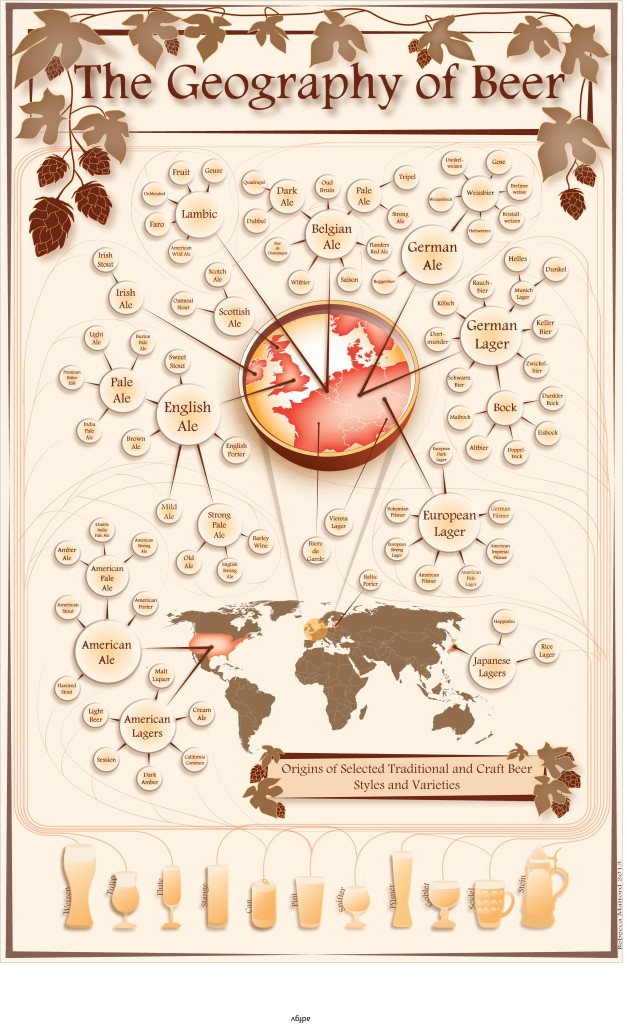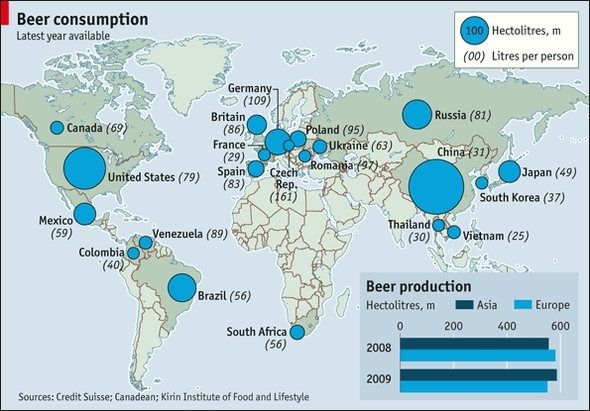There are beer facts that we know…And there are beer facts that we know we don’t know. But there are also beer facts that didn’t even cross our minds ….at least, not until now. And a lot of what we’ve recently learned came from Mark Patterson and Nancy Hoalst-Pullen, who go as The Beer Doctors on Facebook and Twitter, and are geographers from Kennesaw State University in Georgia in real life.
 They’re also the editors of this book called The Geography of Beer and it’s a scholarly collection of articles written by several serious academics about the subject (which probably explains why we didn’t know much of this). They recently did an interview with The Plate, a daily discussion series on National Geographic’s website, and talked “beer geography” – and we’ve got to admit, we’ve never felt stupider.
They’re also the editors of this book called The Geography of Beer and it’s a scholarly collection of articles written by several serious academics about the subject (which probably explains why we didn’t know much of this). They recently did an interview with The Plate, a daily discussion series on National Geographic’s website, and talked “beer geography” – and we’ve got to admit, we’ve never felt stupider.
Here are some things that we clearly should have already known – but sadly didn’t.
Beer is the Third Most Widely Consumed Beverage on The Planet
According to Patterson and Holst-Pullen, “beer is the third most widely consumed beverage in the world, after water and tea.” If that’s the truth – and we’re assuming it is (these are serious academics, not the ACB editorial staff at happy hour) – then we’re kind of amazed we didn’t know that!
What SAB Stands For
The SAB in SABMiller stands for South African Breweries. It seems obvious now that they’ve mentioned it – but we’re not sure we ever thought about that really….
China Now Produces the Most Beer in the World
We’re going to say that we knew this, so we don’t come off as total losers (and it does strike us as vaguely familiar). And although this is probably true, we remain cautious, because we all know how China can get sometimes – they tell us the truth they want us to know…right?
 Beer is a Geopolitical Product…It’s both Universal and Local at the Same Time
Beer is a Geopolitical Product…It’s both Universal and Local at the Same Time
Hey this is something that WE DID KNOW so don’t give us shit! But this is a key takeaway from their book.
On one hand, beer is universal. After all, it basically uses four main ingredients – water, grain, hops, and yeast – and this is true all over the world. But those ingredients, although similar on a macro-level, all have unique characteristics on a micro-level depending on where they come from. Yeasts vary from region to region, as do the malted grains and the hops available for local brewers to choose from in different parts of the world.
And the water used in brewing affects the beers created in different regions. The hard water found in Great Britain was as important to the creation of the classic India Pale Ale style as the infusion of hops that were added to preserve those beers. And Pilsners originated in the Czech Republic, a region where the water is soft and pretty much has no mineral composition… so the result is something that most lager drinkers will call clean and crisp.
Here’s What We Know About Us
Just because we write about craft beer daily – and cover the industry aggressively – doesn’t mean that we’re “all that.” We don’t claim to be experts – we just hope to be fun – and that (in spite of what your friends and families think) you’ll continue to hang out with us.
 American Craft Beer The Best Craft Beer, Breweries, Bars, Brewpubs, Beer Stores, And Restaurants Serving Serious Beer.
American Craft Beer The Best Craft Beer, Breweries, Bars, Brewpubs, Beer Stores, And Restaurants Serving Serious Beer.
